Born in Copenhagen, on 12th March 1886, Kay Nielsen came from a theatrical background, his mother was an actress and his father a theatrical director. Nielsen studied art at the Acadamie Julian in Paris and, after an exhibition in a Bond Street Gallery, acquired commissions from Hodder and Stoughton to illustrate a series of fairy tale books.
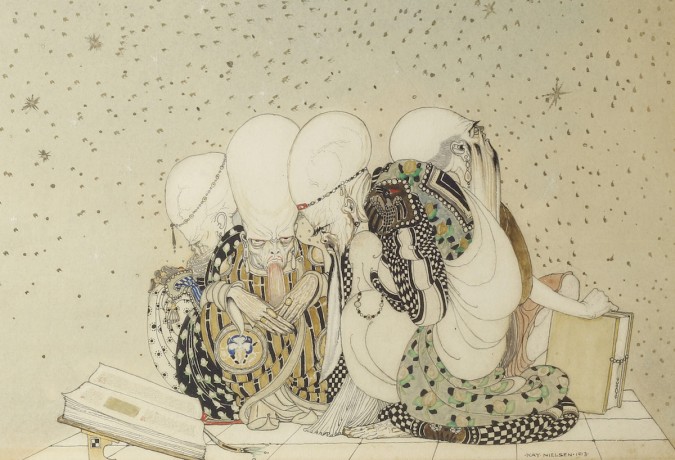
'The Riddle of the Stars,' Detail from a watercolour exhibited at Leciester Galleries, 1913
Nielsen illustrated four major gift books, the first of which In Powder and Crinoline was published in time for the Christmas gift market of 1913. It was issued in two formats; a sumptuous Edition de Luxe, bound in green vellum with gilt embossed decoration and signed by Nielsen.
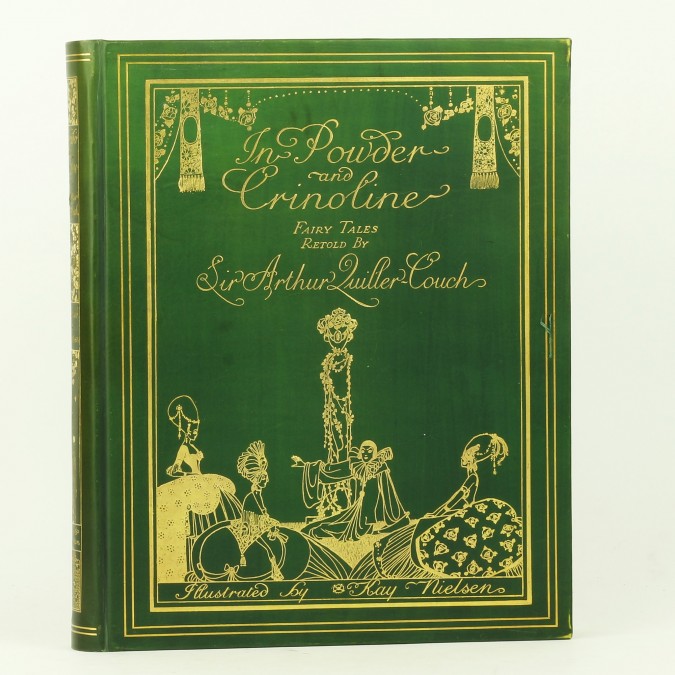
Green vellum binding for the Edition de Luxe
Whilst the deluxe edition was a truly elaborate production containing 26 colourful, Art Nouveau stlye colour plates. The 'trade' (ordinary) edition was a much simpler affair, with a grey cloth spine over grey paper covered boards and including only 24 of the colour plates. It did, however, come in a card box, with one of the most striking colour illustrations to the upper cover.
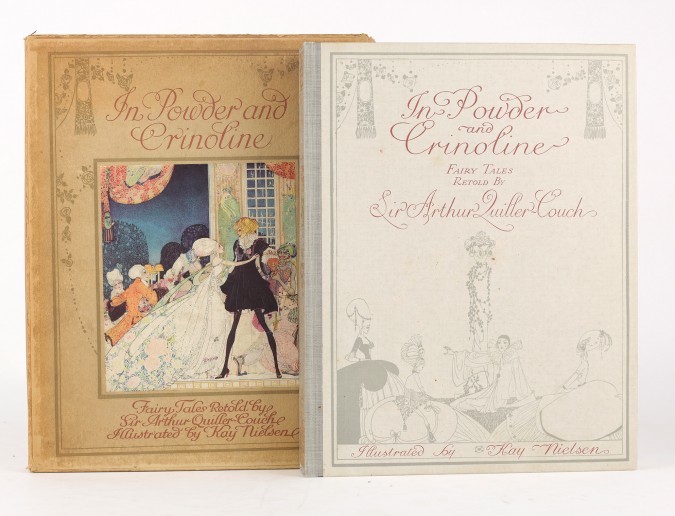
Trade edition in publisher's box
In Powder and Crinoline offers the reader a selection of old French fairy tales written by Charles Perrault and introduced by Sir Arthur Quiller-Couch. Tales such as Twelve Dancing Princesses provide the artist with an opportunity to draw princesses, ball gowns, romantic woodlands and shady glades, all in a rainbow of colour.
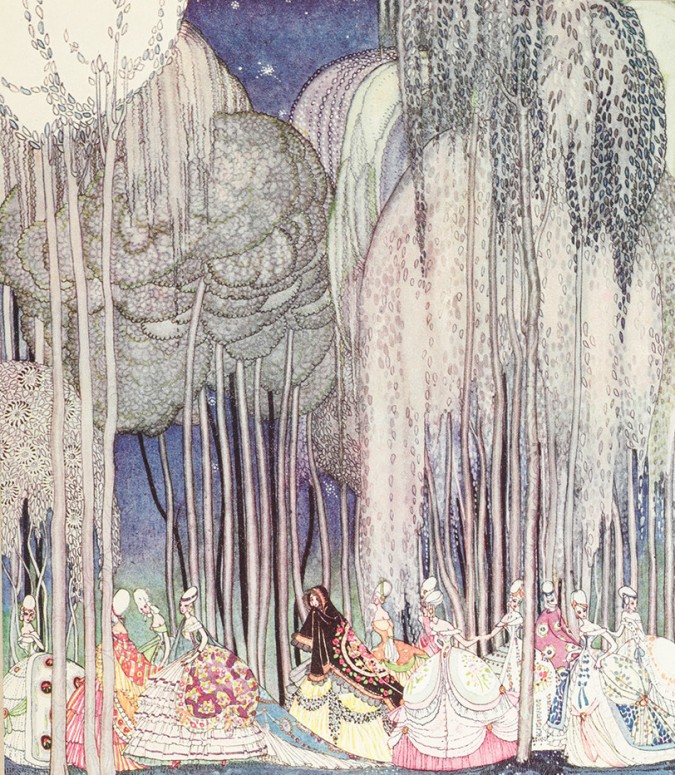
An article in the 1913 Christmas Bookman recommends this work as, “preeminently a Gift book”. Describing Nielsen as, “a young artist of curiously original gifts. There are traces in his drawings for “In Powder and Crinoline” of the influence of Aubrey Beardsley, and there is also an imaginative daring, a fantasy, a fascinating grace and decorative loveliness that are peculiarly his own and make his art unique amongst the illustrations of this years books.”
The most celebrated of Kay Nielsen's books East of the Sun and West of the Moon, was published the following year, drawing inspiration from the Nordic tales of his childhood. Again it was published in both a limited Edition de Luxe and a trade edition, each with 25 colour plates. The limitation leaf of the Edition de Luxe states that 500 copies are printed, but the publisher's blurb mentions only 250 copies which were offered for sale at two guineas. For some time the limited edition of East of the Sun and West of the Moon has been considered a black pearl of Golden Age books.
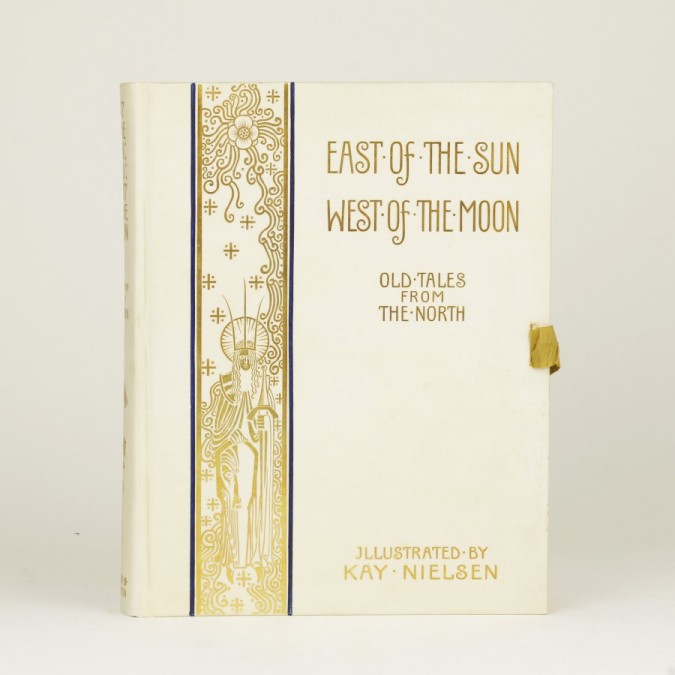
White vellum binding for the Edition de Luxe
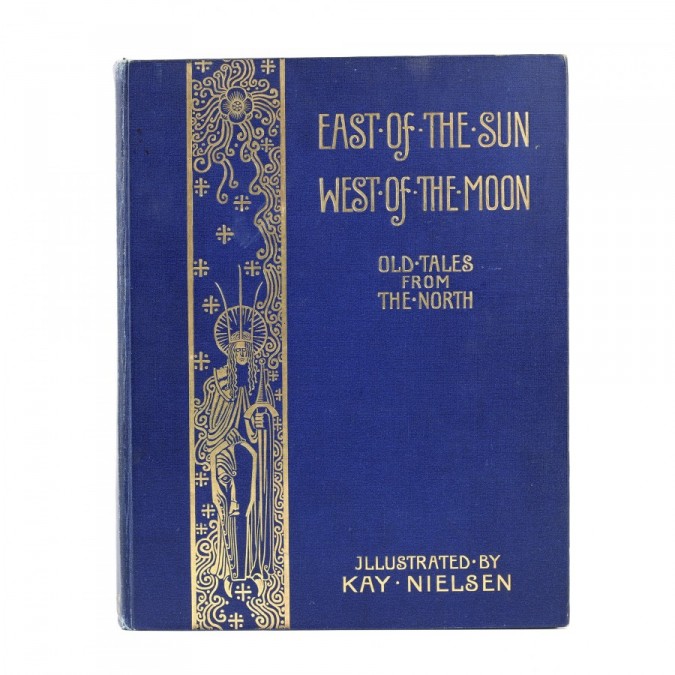
First trade edition, 1914
Keith Nicholson says of the illustrations “These 25 illustrations represent Nielsen at his most spectacular. An advance of strength and decorative feeling on his former illustrations is marked.” Whilst Nielsen’s images still highlight the influence of Art Nouveau his skill and imagination are strong enough to give all his drawings an individual and unique charm.
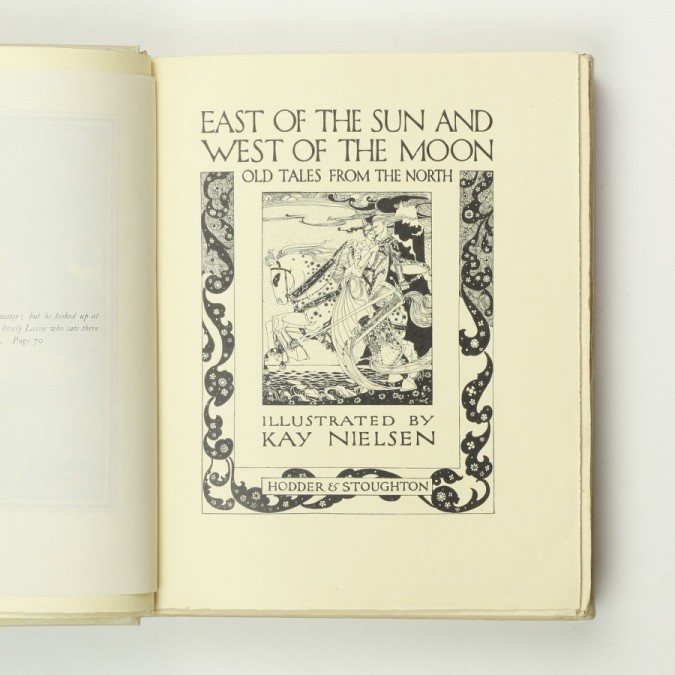
East of the Sun and West of the Moon title page
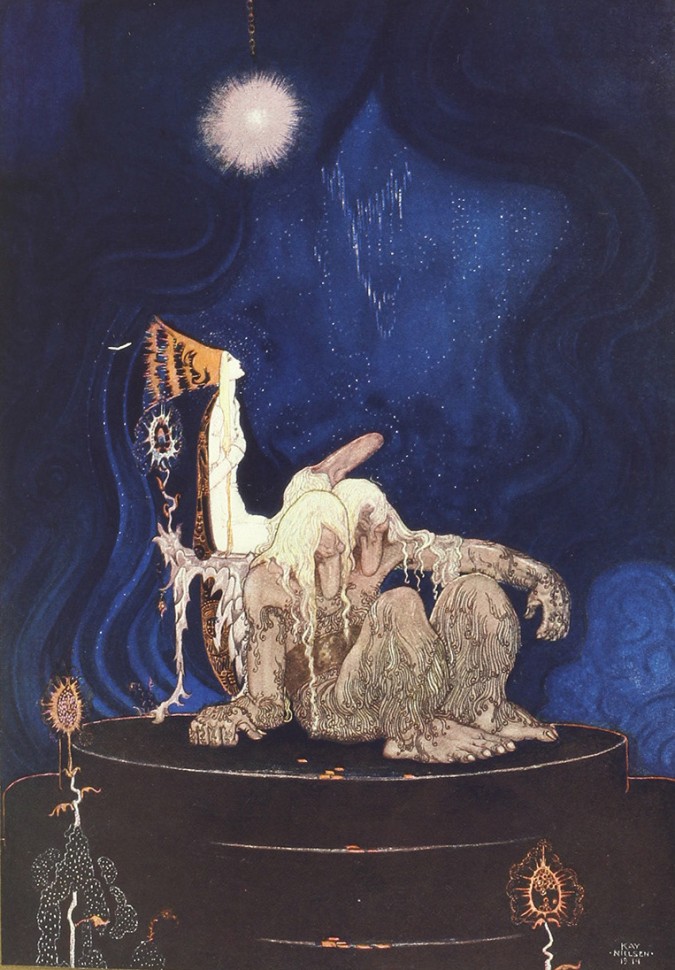
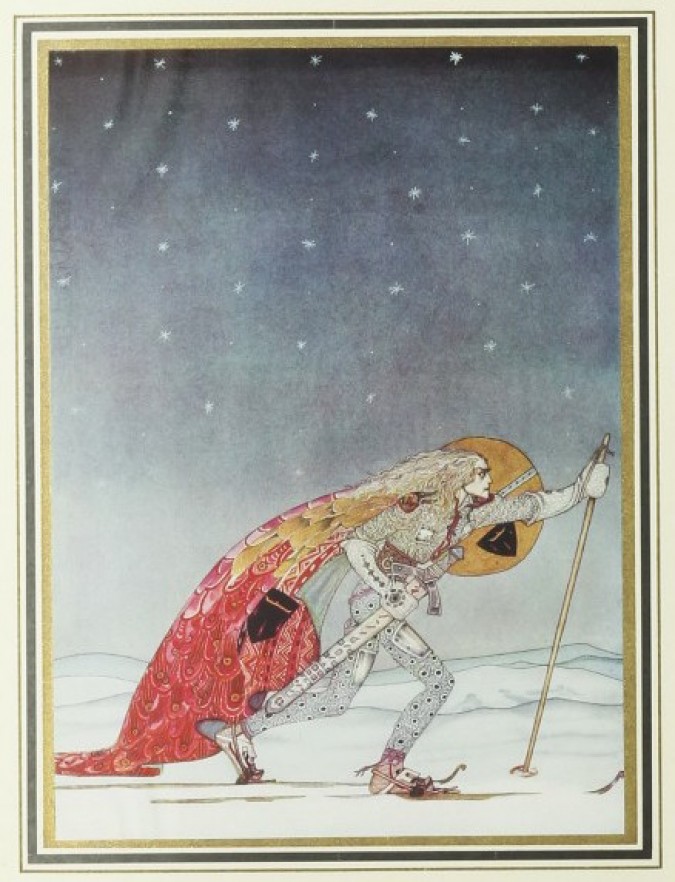
Due to be published next was a collection of Hans Andersen's fairy tales, but the advent of war put on hold luxury book production and hence it was almost a decade before Nielsen's Hans Andersen was published, at Christmas 1924. The deluxe edition comprises 500 copies and was issued in two bindings, a white vellum and a navy cloth, each version signed by Nielsen and each with a different cover design.
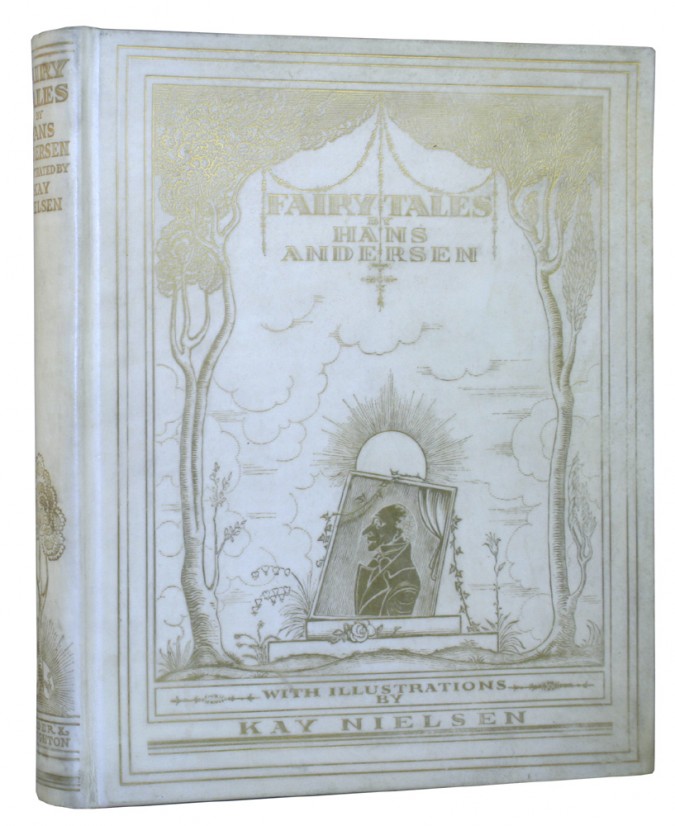
Primary binding of white vellum with potrait of Hans Christian Andersen to cover
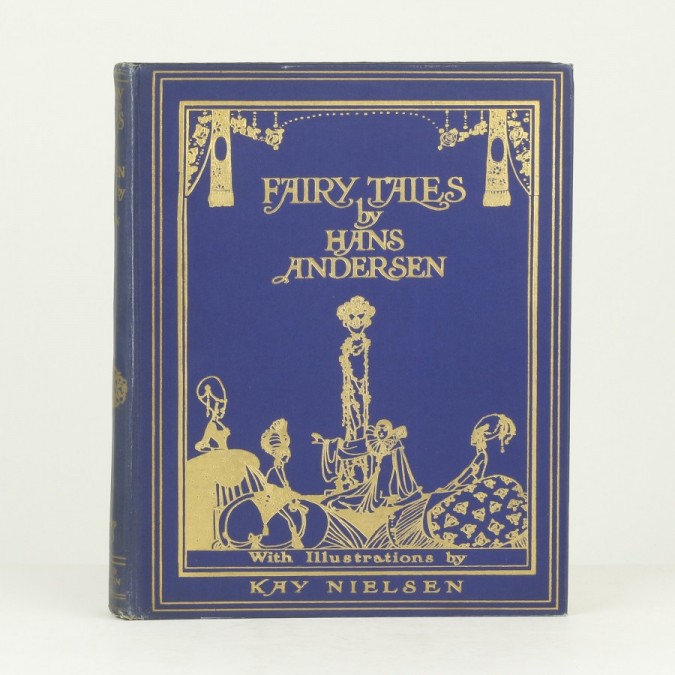
Nielsen's Hans Andersen includes many classic fairy tales including, The Real Princess, The Snow Queen and The Hardy Tin Soldier. His drawing captures the magical quality of the tales and his princesses are as beautiful as any a small child could imagine.
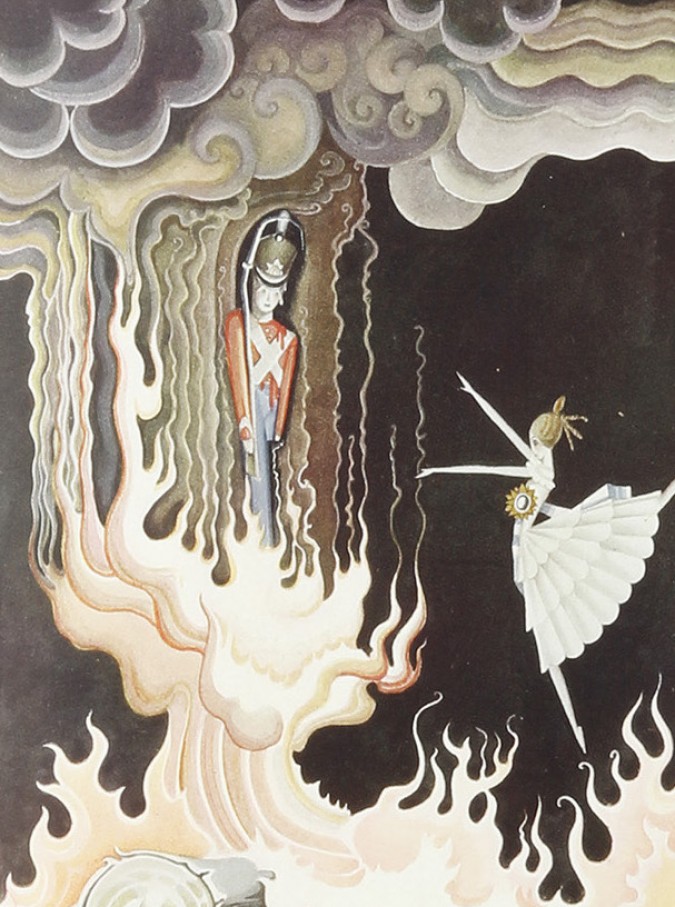
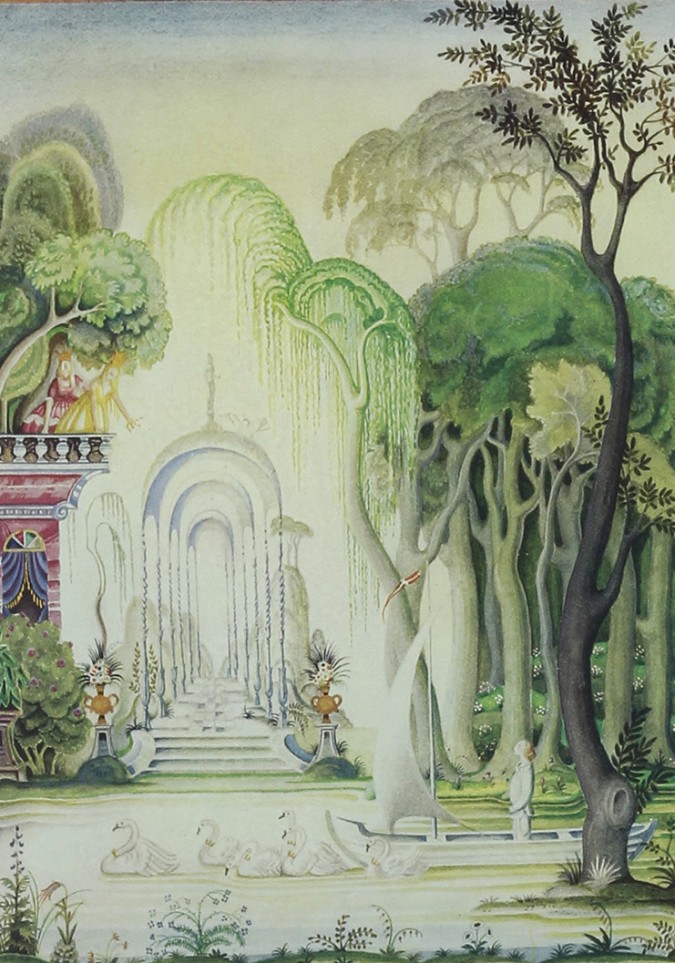
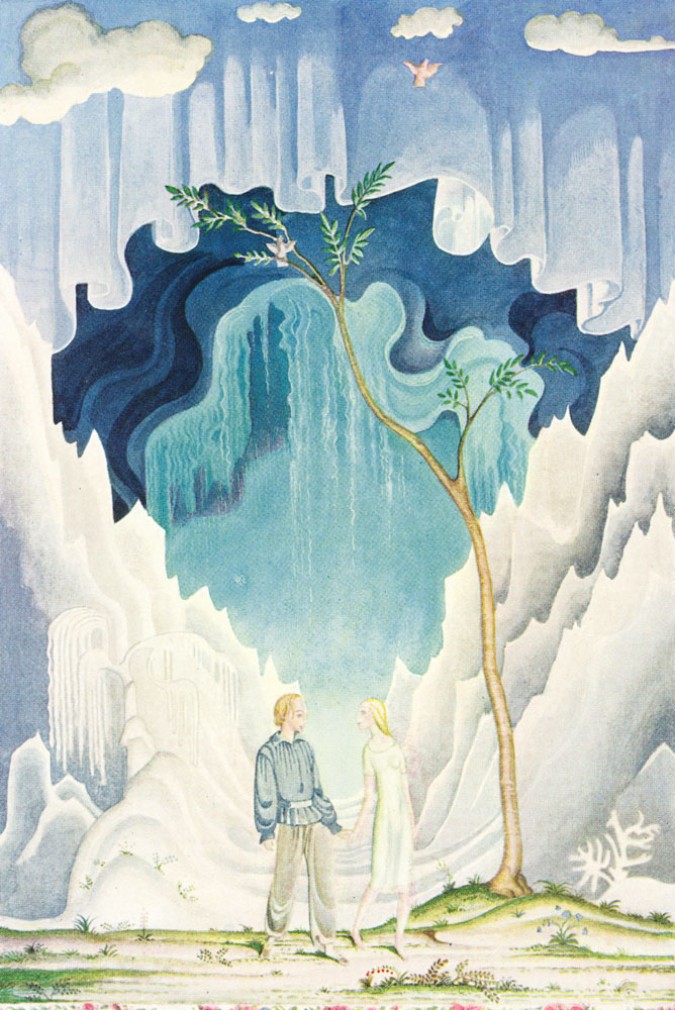
It came as no surprise that the fourth major gift book to be illustrated by Nielsen would be the fairy stories of the Brothers Grimm. Entitled Hansel and Gretel and other Stories of the Brothers Grimm, the book sees a chance in style reflecting fashion of the times, as Art Nouveau begins to give way to the influence of Art Deco. Once again Hodder produced a large deluxe edition of the book, limited to just 600 copies and signed by Nielsen. Part way through production someone spotted that Nielsen's name had been spelt incorrectly. Some initial copies had already been distributed with the spelling "Nielson" to the spine, others which had already been bound were corrected with a strip of blue cloth acting as name label.
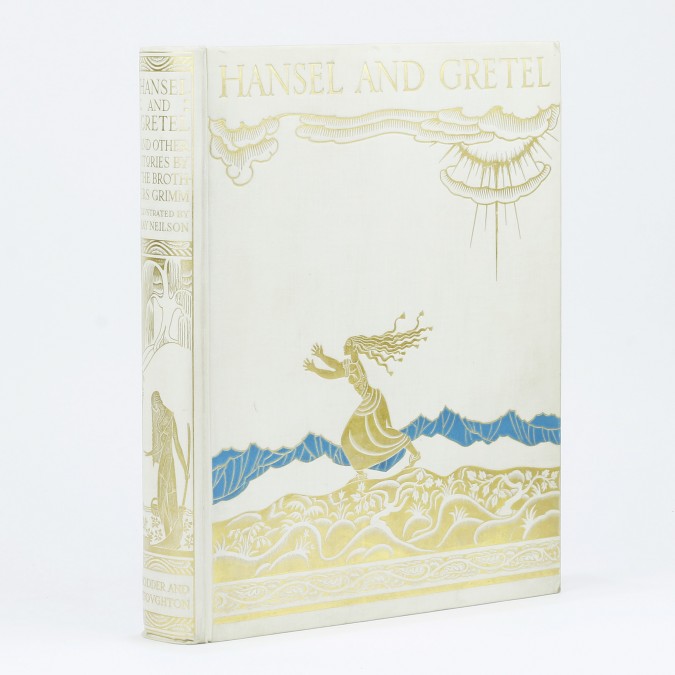
Publisher's misspelt Nielsen's name on the initial batch
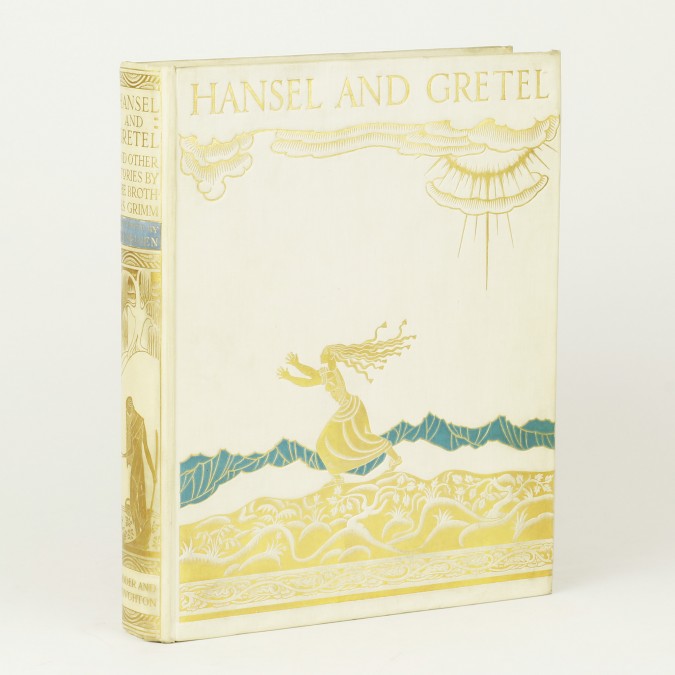
Limited edition with the corrected title label
By 1925 the effects of the war had decimated sales of luxury books and so the planned trade edition of the book was never released in the UK, although there is an American trade edition, issued in publisher's box.
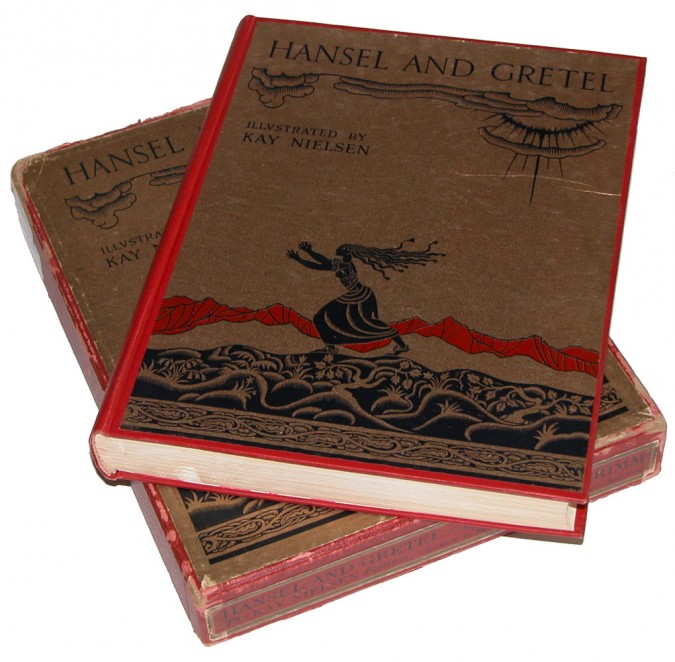
US edition, published by Doran in 1925
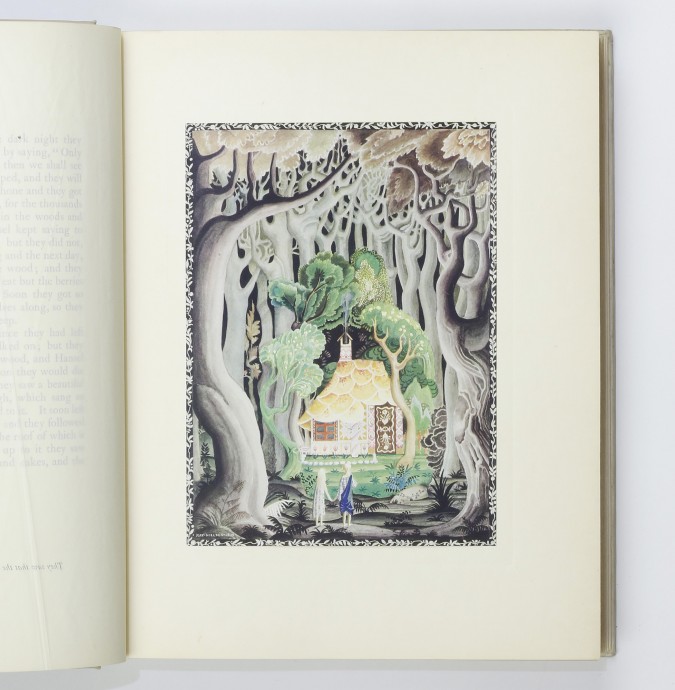
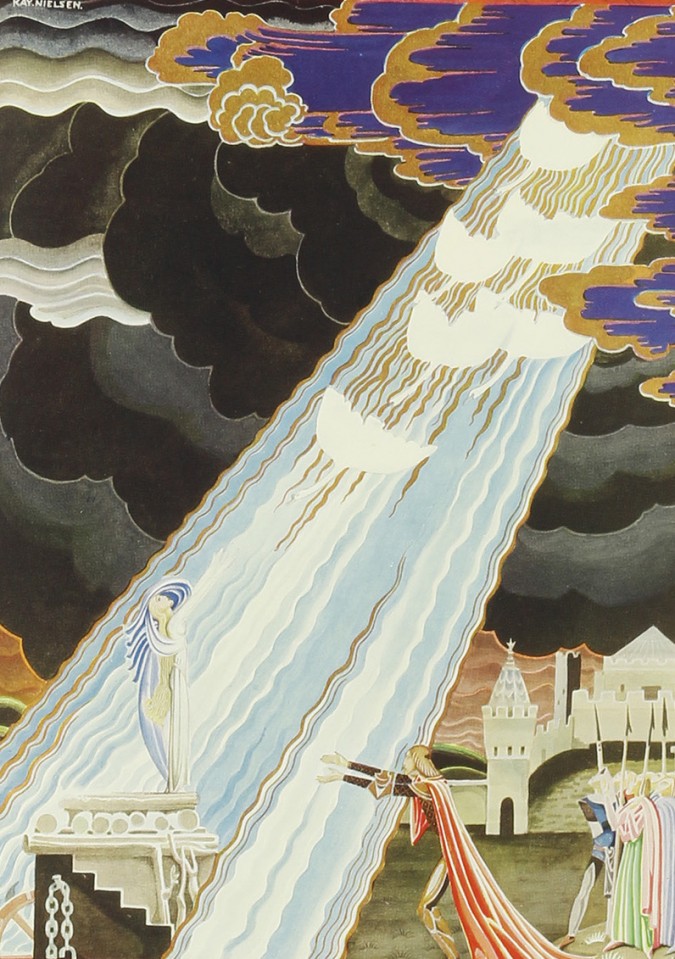
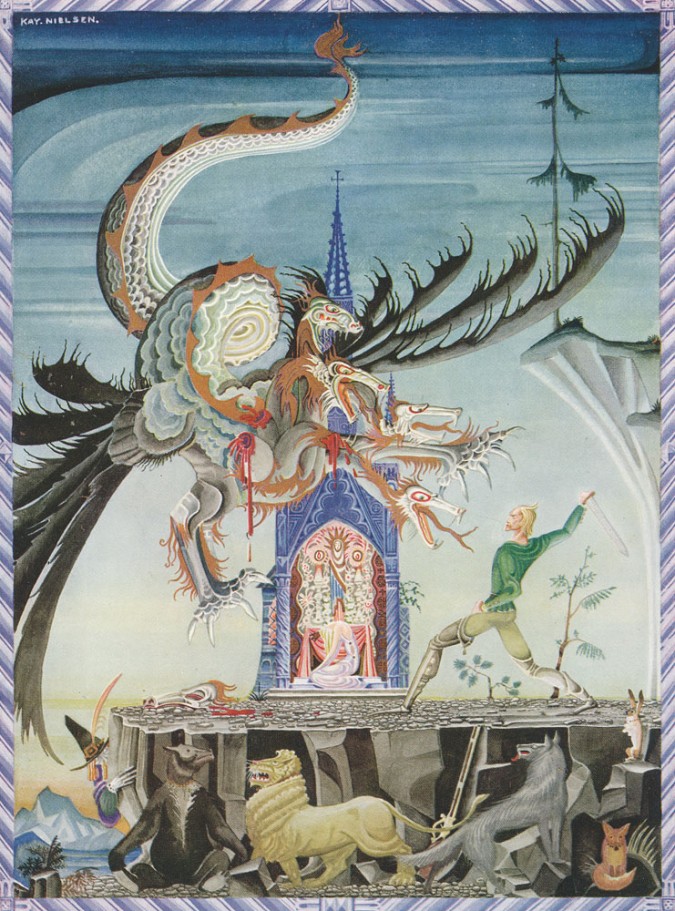
Nielsen’s fifth book, Red Magic was produced in a much more modest format than the earlier gift books. By 1930 the era of the Golden Age gift book was at an end and the volume which contains classic stories such as Bluebeard, Aladdin and The Six Swans was reduced to an octavo size with just eight of the fifty eight illustrations printed in colour.
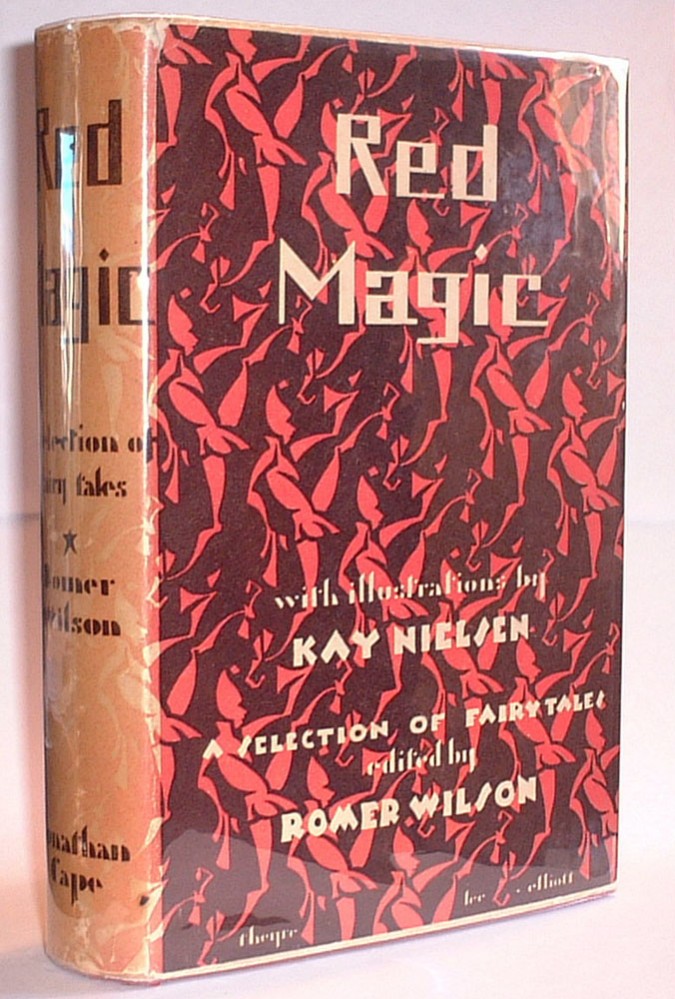
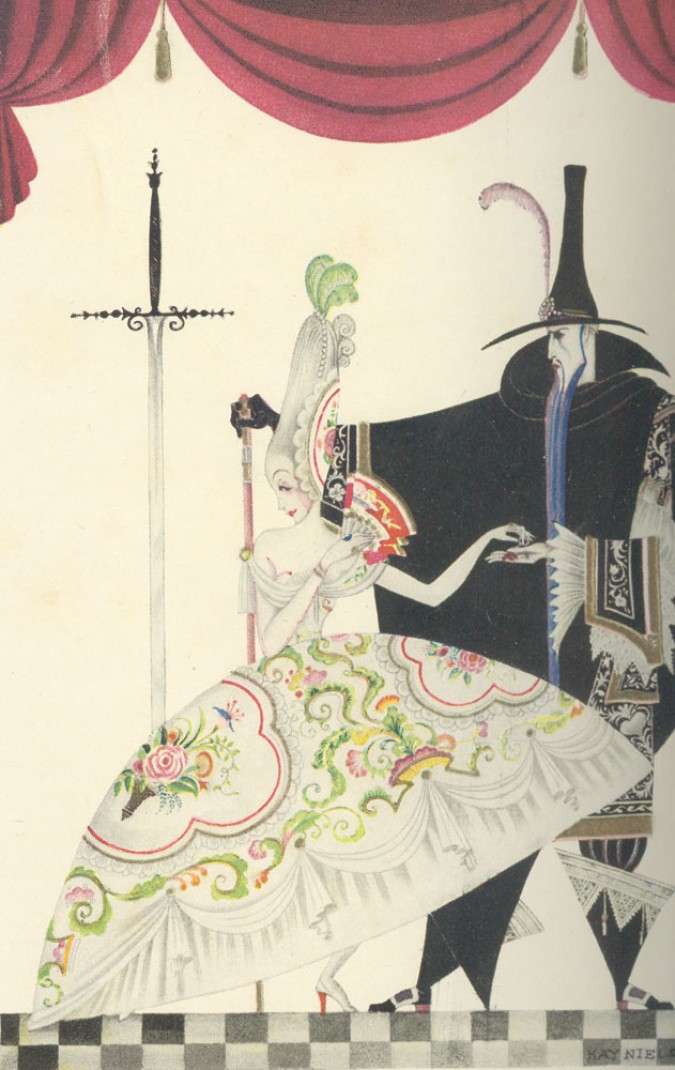
Nielsen soon abandoned book illustration and moved to America. There he worked on various theatrical and film projects, providing drawings for Disney’s Fantasia, and taking commissions for murals.
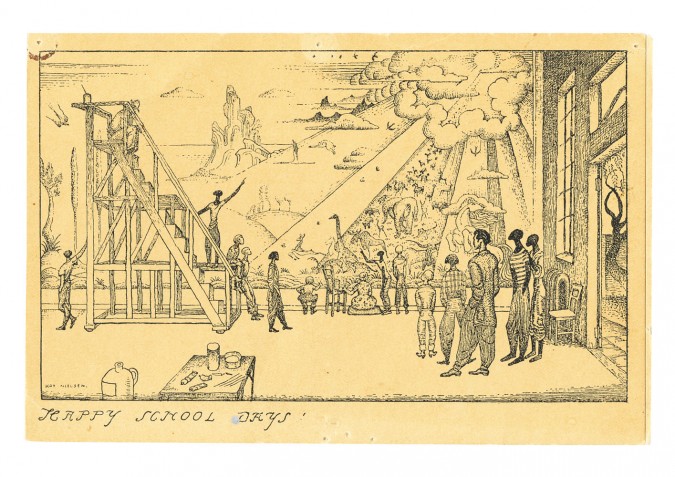
In 1944 Nielsen was commissioned by the Filippa Pollia Foundation to paint a mural which would be enjoyed by the children of Los Angeles. The mural originally hung in the Downtown Central Junior High School, which subsequently closed and in 1949 the painting was rehoused in the library of Sutter Middle School. The mural is vast, 20 foot tall and 30 foot wide and depicts the newly created world as suggested in the bible, featuring more than 200 species of animals. Upon relocation to Sutter Nielsen was dismayed to find that the painting, which consisted of five canvas panels had been badly stored and damaged. He erected a scaffold in Sutter's library and carefully restored the painting. His wife Ulla aided his work, offering both moral and practical assistance, she was allowed to help repaint the grass and the background, but not the animals! During the creation of the mural Nielsen drew inspiration from the book of Genesis and also from Haydn's creation, a piece of music which had moved him enormously as a child. The drawing above is taken from a presonal card Nielsen made to commemorate the work on the mural.
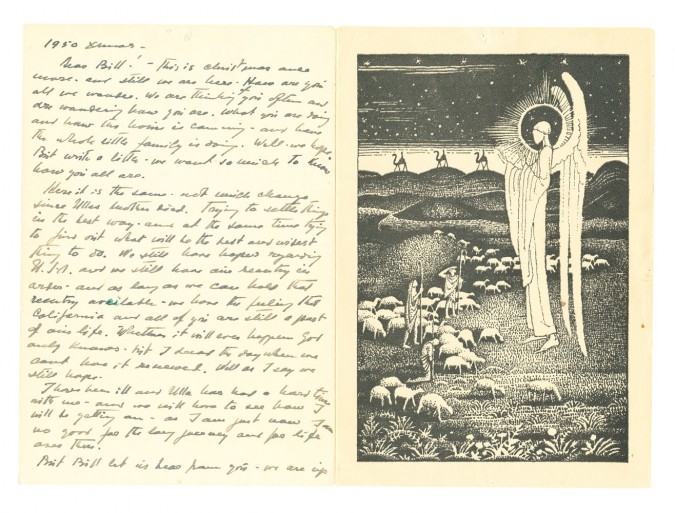
CHRISTMAS CARD Printed for the artist's private use, 1950
We frequently handle books, paintings and ephemera related to Kay Nielsen for a full range of our stock and many more images browse here.
Comments
Recent Posts
- The Evolution of Crime
- Tour The Bookshop On Your Screen
- The Genesis of Mr. Toad: A Short Publication History of The Wind In The Willows
- Frank Hurley's 'South'
- The "Other" Florence Harrison
- Picturing Enid Blyton
- Advent Calendar of Illustration 2020
- Depicting Jeeves and Wooster
- Evelyn Waugh Reviews Nancy Mitford
- The Envelope Booklets of T.N. Foulis
- "To Die Like English Gentlemen"
- Kay Nielsen's Fantasy World
- A Brief Look at Woodcut Illustration
- The Wealth Of Nations by Adam Smith
- What Big Stories You Have: Brothers Grimm
- Shackleton's Antarctic Career
- Inspiring Errol Le Cain's Fantasy Artwork
- Charlie & The Great Glass Elevator
- Firsts London - An Audio Tour Of Our Booth
- Jessie M. King's Poetic Art, Books & Jewellery
Blog Archive
- January 2024 (1)
- January 2023 (1)
- August 2022 (1)
- January 2022 (1)
- February 2021 (1)
- January 2021 (1)
- December 2020 (1)
- August 2020 (1)
- July 2020 (2)
- March 2020 (3)
- February 2020 (2)
- October 2019 (2)
- July 2019 (2)
- May 2019 (1)
- April 2019 (1)
- March 2019 (2)
- February 2019 (1)
- December 2018 (1)
- November 2018 (1)
- October 2018 (2)
Bryan 07/Apr/2020 17:11
Beautiful! Art nouveau era. Did Kay know or interact with Maxfield Parrish?